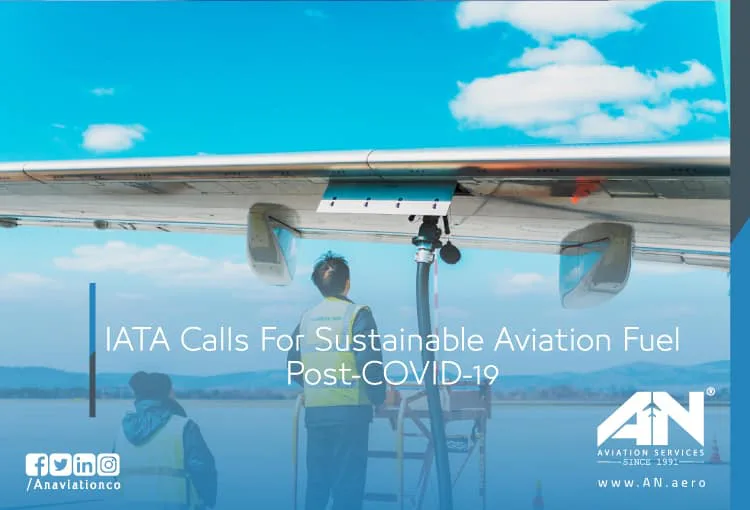
As the aviation industry emerges from the challenges of the COVID-19 pandemic, the focus has shifted toward rebuilding a more sustainable future. The International Air Transport Association (IATA) has emphasized the critical role of Sustainable Aviation Fuel (SAF) in reducing CO2 emissions and addressing climate change. With the aviation sector accounting for approximately 2–3% of global greenhouse gas emissions, the development and adoption of SAF have become an essential strategy in achieving net zero carbon emissions by 2050.
But what exactly is Sustainable Aviation Fuel, and why is it so crucial for the aviation industry? Let’s explore how SAF works, its environmental benefits, and the challenges involved in scaling its production post-pandemic.
What Is Sustainable Aviation Fuel (SAF)?
Sustainable Aviation Fuel (SAF) is an alternative to traditional fossil-based jet fuel, designed to significantly reduce the carbon footprint of air travel. Unlike conventional jet fuel, which is derived from petroleum, SAF is produced from renewable resources such as food crops, agricultural waste, used cooking oil, or even municipal solid waste.
What makes SAF particularly attractive is its ability to reduce carbon emissions across its life cycle—from production to combustion. On average, SAF can cut CO2 emissions by up to 80% compared to traditional jet fuel, depending on the feedstock and production method used. Moreover, it is compatible with existing aircraft and fuel infrastructure, meaning airlines can adopt SAF without requiring significant changes to their operations.
Why Does IATA Call for SAF Post-Pandemic?
The COVID-19 pandemic brought air travel to a near standstill, causing unprecedented financial losses for airlines. While recovery is underway, the industry faces mounting pressure to address its environmental impact and align with global climate goals.
IATA’s call for increased SAF adoption reflects the urgency of the situation. By scaling up SAF production and usage, the aviation sector can:
- Reduce CO2 Emissions: SAF provides a pathway to significantly lower emissions, helping airlines contribute to the goal of net zero carbon emissions by 2050.
- Meet Consumer and Regulatory Demands: With growing awareness of climate change, passengers and governments alike are demanding greener air travel options. SAF allows airlines to demonstrate their commitment to sustainability.
- Support Economic Recovery: Investing in SAF production creates jobs, supports local economies, and drives innovation, all of which are vital for post-pandemic recovery.
The Environmental Impact of SAF
One of the standout benefits of SAF is its ability to drastically cut emissions across its entire life cycle. This includes emissions from raw material sourcing, production, transportation, and final combustion in aircraft engines.
For example, while traditional jet fuel releases a significant amount of CO2 emissions during combustion, SAF is made from renewable sources that absorb CO2 during their growth phase. This creates a closed-loop system that minimizes the overall climate impact.
Additionally, SAF production methods can be tailored to avoid competition with food crops or land use changes, further enhancing its sustainability credentials.
Challenges in Producing and Scaling SAF
Despite its potential, widespread SAF adoption faces several obstacles, including:
- Limited Production: Current SAF production volumes account for less than 1% of the total jet fuel market. To achieve meaningful emissions reductions, production must be scaled significantly.
- High Costs: SAF is currently more expensive to produce than traditional jet fuel, making it less attractive for airlines operating on tight margins. Government incentives and subsidies are needed to bridge the cost gap.
- Supply Chain Constraints: Developing a robust global supply chain for SAF is a complex task, requiring collaboration between airlines, fuel producers, and policymakers.
IATA’s Strategy for SAF Adoption
To address these challenges, IATA is advocating for a multi-pronged approach to accelerate SAF adoption:
- Policy Support: IATA is calling on governments to introduce policies that incentivize SAF production, such as tax breaks, subsidies, and funding for research and development.
- Collaborative Partnerships: Airlines, fuel producers, and industry stakeholders must work together to expand SAF supply chains and invest in production facilities.
- Technology Innovation: Advancing technologies such as synthetic fuels and waste-to-energy processes can enhance SAF production efficiency and reduce costs.
The Path to Net Zero Carbon by 2050
Achieving net zero carbon emissions in the aviation industry is no small feat. However, SAF represents a critical pillar of this strategy. By replacing traditional jet fuel with SAF, airlines can make substantial progress in reducing their emissions by 2050 while continuing to meet the growing demand for air travel.
Additionally, SAF complements other climate solutions, such as aircraft design improvements, operational efficiencies, and carbon offset programs. Together, these initiatives create a comprehensive roadmap for a more sustainable future in aviation.
Conclusion
The post-COVID era presents an opportunity for the aviation industry to reinvent itself as a leader in sustainability. By embracing Sustainable Aviation Fuel, airlines can drastically reduce their CO2 emissions, meet regulatory requirements, and cater to environmentally conscious travelers.
However, achieving this vision requires collective action. Governments must provide the policy framework and financial support to scale SAF production, while airlines and fuel producers must invest in innovative technologies and infrastructure.
As IATA champions the cause of SAF, the aviation industry has a unique chance to align with global climate goals and redefine the future of air travel. Sustainable aviation is no longer a distant dream—it’s a necessity for the generations to come.

